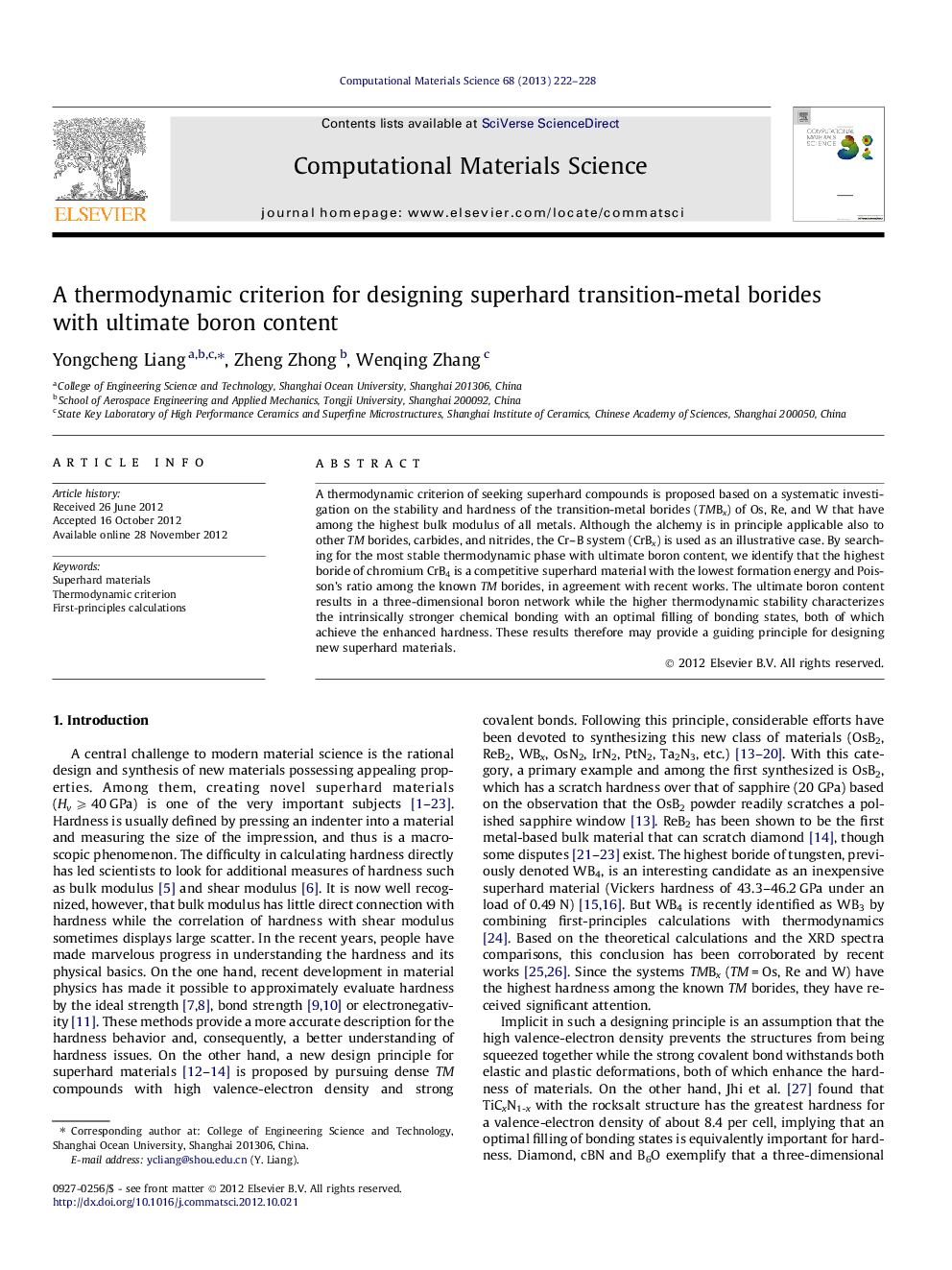| Article ID | Journal | Published Year | Pages | File Type |
|---|---|---|---|---|
| 1561346 | Computational Materials Science | 2013 | 7 Pages |
A thermodynamic criterion of seeking superhard compounds is proposed based on a systematic investigation on the stability and hardness of the transition-metal borides (TMBx) of Os, Re, and W that have among the highest bulk modulus of all metals. Although the alchemy is in principle applicable also to other TM borides, carbides, and nitrides, the Cr–B system (CrBx) is used as an illustrative case. By searching for the most stable thermodynamic phase with ultimate boron content, we identify that the highest boride of chromium CrB4 is a competitive superhard material with the lowest formation energy and Poisson’s ratio among the known TM borides, in agreement with recent works. The ultimate boron content results in a three-dimensional boron network while the higher thermodynamic stability characterizes the intrinsically stronger chemical bonding with an optimal filling of bonding states, both of which achieve the enhanced hardness. These results therefore may provide a guiding principle for designing new superhard materials.
► We propose a designing criterion for superhard transition-metal borides, carbides, and nitrides. ► A three-dimensional covalent network and highly thermodynamic stability achieve the enhanced hardness. ► We identify that the highest boride of chromium CrB4 is a competitive superhard material.
